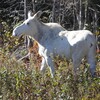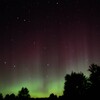
Winter Meteor Showers in Northeastern Ontario
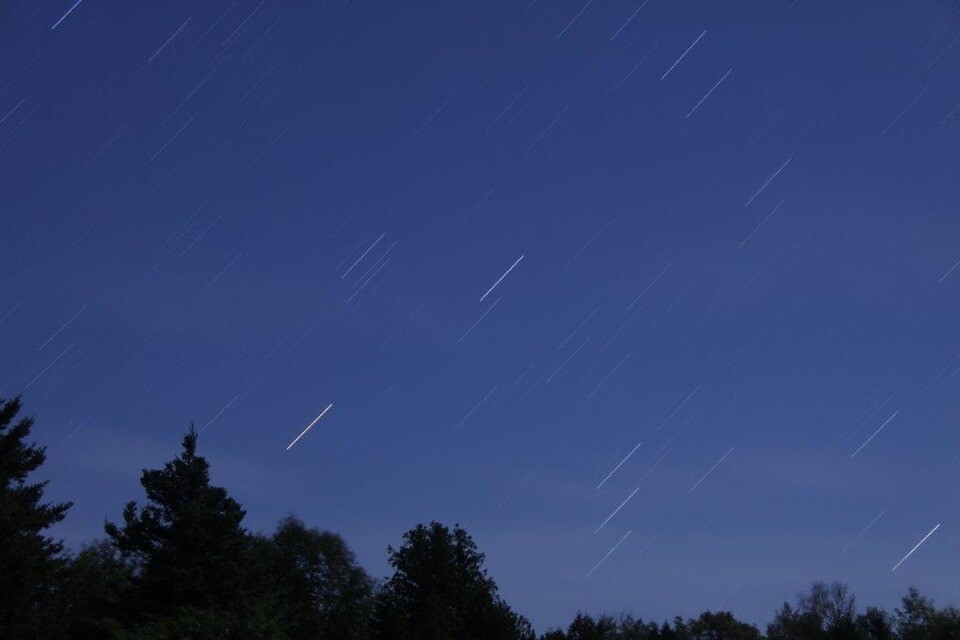
Snow is on the ground, the night air is crisp, and the winter sky is in its glory. Over the next few months, the 12 bright stars belonging to no less than six constellations will slowly march across the sky.
Throughout ancient history, the Arabs, Egyptians, Romans, and Babylonians studied the night sky and brought forward many contributions to the study of astronomy. These included naming the brightest stars and the five visible planets, along with creating a classification of star brightness, and of course the constellations themselves.
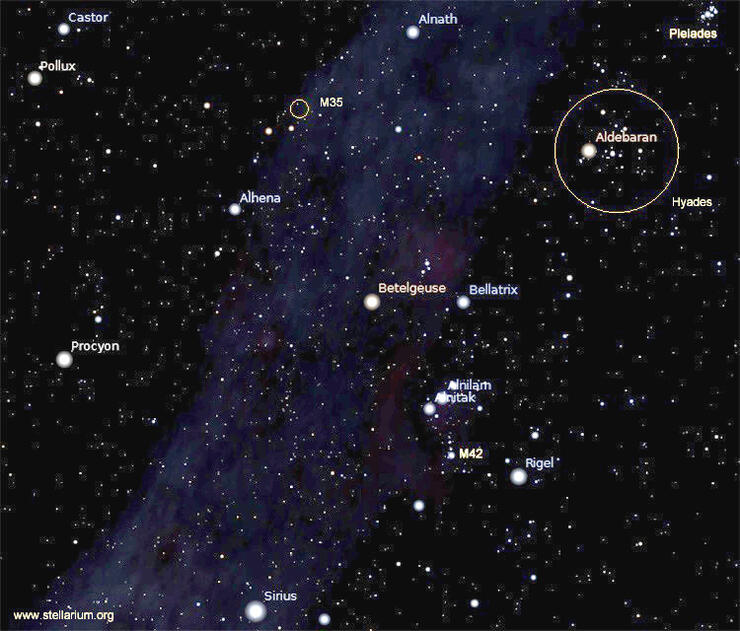
The night sky is a collection of traditional star names as well as groups of bright stars that portrayed a person, animal, object, or god. In many cases, they interacted with another star pattern in a mythological story. Take for instance Orion the Hunter, with the tell-tale three bright stars in a row forming his belt, the top two stars representing his shoulders, and the bottom two his knees. Stars may seem close, but are very far away such as the top left star named Betelgeuse. It is an estimated 600 light years away, with one light-year rounded off to 10 trillion km.
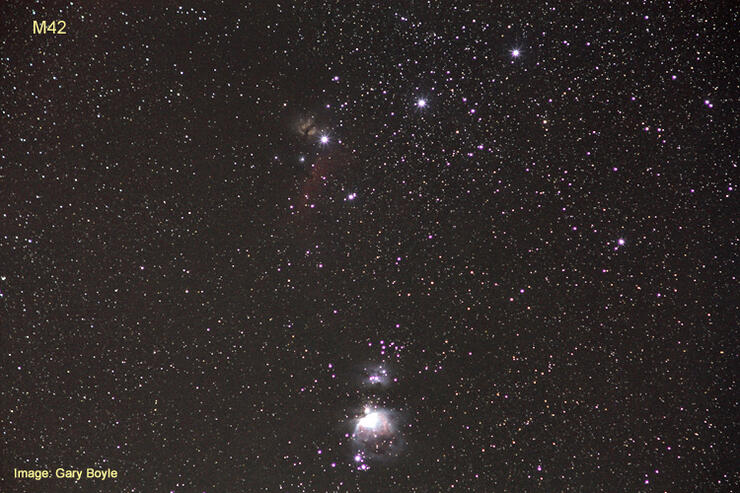
From the middle star of Orion’s belt, find a hazy patch partway down the sword. This is the Orion Nebula, also known as a “stellar nursery,” where pockets of gas and dust are condensing and collapsing to eventually become hundreds of suns with planets. The Orion Nebula (catalogued as M42) is located 1,500 light years away. The hunter is embraced in a mythological battle with Taurus the Bull to the upper right. The “angry” eye of the bull named Aldebaran is located only 67 light years away and appears inside a V-shaped cluster of stars called the Hyades Cluster located some 150 light years away. Aldebaran is a foreground star and not part of the cluster.
Further up the sky, we come across the Pleiades Cluster (M45) or the heart of the bull. Also known as the “Seven Sister,” this cluster is located 450 light years from us and is only 100 million years old—mere babies. The haze appearing in photos is the result of the cluster passing through an interstellar gas cloud.
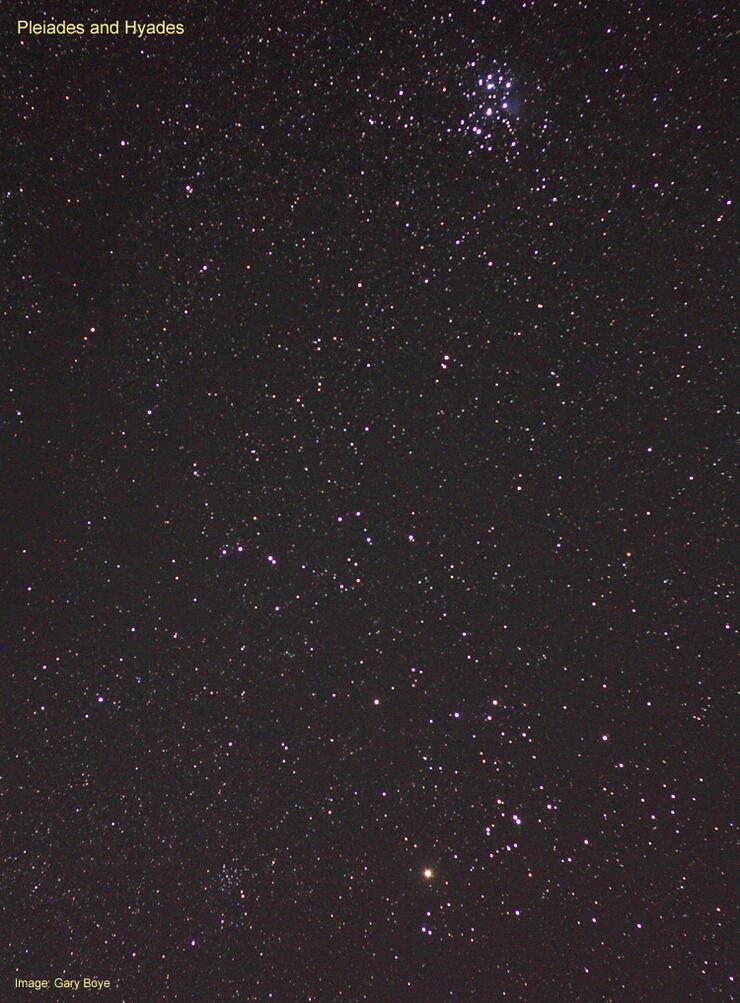
From the pristine dark skies of Northeastern Ontario, the outer portion of the Milky Way can be seen on a clear moonless night to the left of Orion. Try your hand at astrophotography by setting up a DSLR camera with a wide-angle lens on a tripod. Set the ISO (light sensitivity) at the highest reading, and open the shutter using an attached cable release for about 20 seconds. You will be surprised what this short exposure will capture with minimal star trails. Keep experimenting, as pixels are free.
Our next constellation to the left is the Gemini Twins and highlighted by two bright stars named Castor and Pollux residing 52 and 34 light-years respectively. Pollux appears bright orange, as it has exhausted its supply of hydrogen that fused into helium. The helium is now fusing into carbon and other elements. In 2006, astronomers discovered an exoplanet named Pollux b that orbits the star in 580 days and is more than twice the mass of Jupiter. Castor, on the other hand, does not have an exoplanet, but consists of three pairs of stars orbiting each other in a very unique cosmic dance.
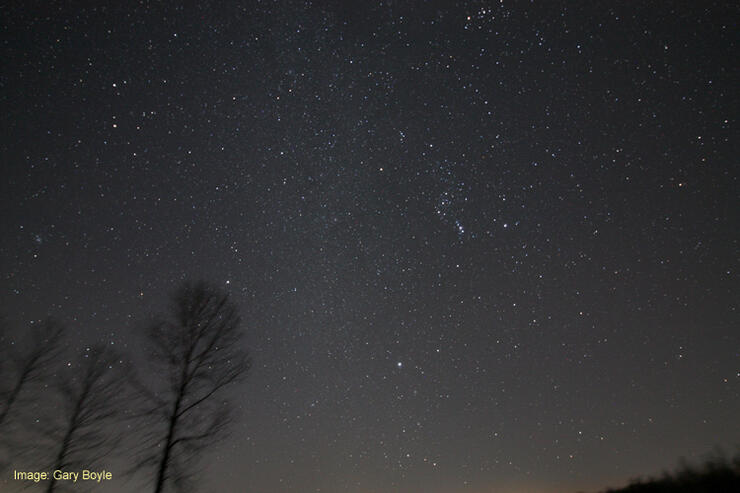
At the bottom of the twin's right foot is a spectacular open star cluster named M35, located an estimated 2,800 light years away; it will appear the size of the full moon in a telescope. With higher magnification, look for the tiny and more distant cluster NGC 2158 which resides about 16,000 light years away.
The planet Venus is the brightest object in the western sky except for the moon. Roughly the same size of the earth, Venus possesses temperatures of 460° C on the day and night side, pressures 90 times those of Earth, and a caustic atmosphere comprising of sulphuric acid and sulphur dioxide. But still, it is a lovely planet to observe. The second brightest planet is Jupiter, which will be behind the sun and not visible for a few months. It will be part of a fantastic photo op along with Saturn, Mars and the crescent moon before sunrise on March 18, 2020.
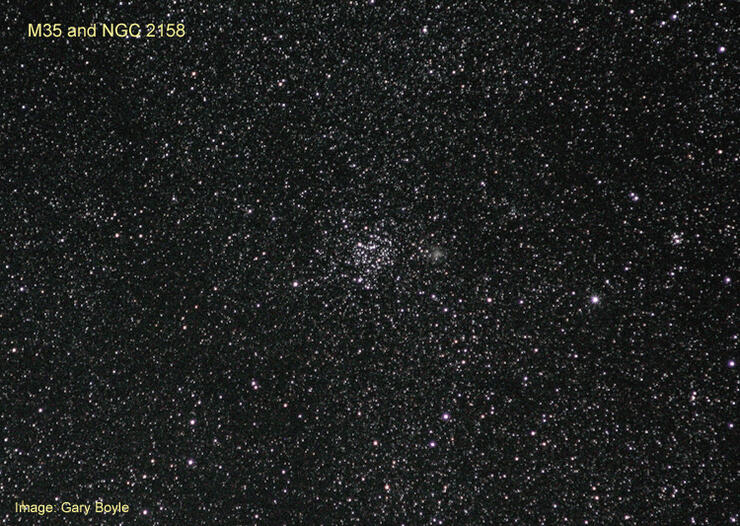
The Geminids meteor shower peaks on the night of December 13 into the morning of the 14th. This shower can produce up to 120 slow-moving meteors per hour, however the full moon occurs two nights earlier. The Quadrantid meteor shower peaks on the night of January 3/4 of 2020 with perhaps the same hourly rate as the Geminids. The first quarter moon sets after midnight.
New moons occur on: December 26, January 24, February 23 and March 24.
Full moons occur on: December 12 – The Cold Moon, January 10 – The Wolf Moon, February 9 – The Snow Moon and March 9 - The Worm Moon.
Recommended Articles
The Seven's Best Hikes, Biking Trails and Lakes

7 Best Spots to Check Out in The Seven

Budget Bliss: Explore Northeastern Ontario Without Breaking the Bank

Bring Your Fam!

Time to Unwind: 6 Spa Havens to Discover In The Seven
5 Amazing Places to SUP in Northeastern Ontario

5 Amazing Bike Rides to Discover

Northern Lights in Northeastern Ontario

Northeastern Ontario's Best Pride Festivals

Fish for one of the World's Rarest Species of Trout

An Insider's Guide to Manitoulin Island

6 Small-Town Gems to Explore in Northeastern Ontario

11 Best Things to Do in Kapuskasing, Ontario





